Forgotten islands on the southern seas…
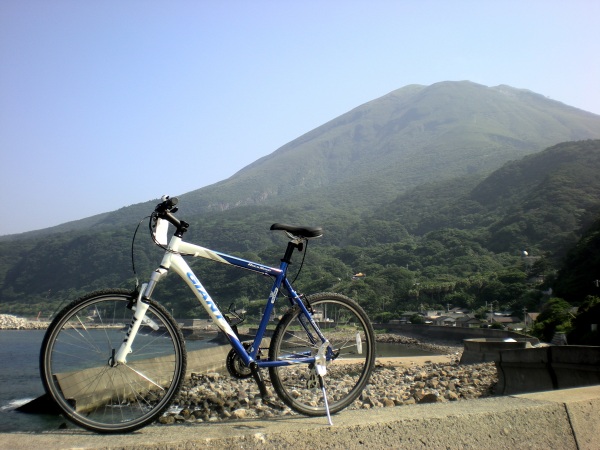
Cycling on the island of Nakanoshima
Every year a special ferry service departs Kagoshima to dispense medical check-ups and treatment at each of the Tokara Islands. For the curious tourist who times their trip right, a one-way ticket can therefore become something of a cruise allowing you to jump on and jump off as the journey progresses southwards. I have been such a tourist, lucky that an excursion with my sensei to conduct fieldwork in Suwanosejima would take us not only to our destination, but to a number of ‘bonus’ volcanoes en route. Bicycle in tow, we had approximately an hour to sprint around at each stop and although any volcanological research was certainly limited in this time, it provided me with an extra insight into island life that seems so distant from the accepted “Japan experience”. The people here have lived on the edge of the Japanese psyche for centuries and if it were not for a few important events – such as the nearby Tanegashima, acknowledged for the first contact with Europeans and the introduction of firearms in the 16th century when a Portuguese was seen to shoot at a duck – these islands would probably remain largely forgotten. Indeed, in the ferry port waiting room at Suwanosejima (which is basically a wooden shed) is pinned a photograph of the local school: a grand total of 7 students, aged 8-15 years old. One cannot help but worry for the future of this island way of life.
Societal worries aside, these islands provide a wonderful selection of volcanoes to explore. Apart from their natural beauty, one of the major draws for me is the fact that they are simply unknown outside of Japan. Kuchinoerabujima, recently infamous for the disappearence of an American poet, and Suwanosejima, Japan’s “most explosive volcano”, are probably the only well studied volcanoes and thus are reasonably familiar to the international ‘volcanological community’. However, through this post I hope to introduce a few more names that might be of interest to the budding geologist, the seasoned Japanophile or the inquisitive browser.
Geology and History:
Sailing out of Kagoshima Bay, our ‘medical’ ferry left behind the mainland peaks of Sakurajima and Kaimon-dake and headed south to the small islands that punctuate the tropical blue. Passing to the starboard, the steaming beacon of Satsuma-Iojima was the first contact with the volcanic, but far more violent lands were waiting: whereas Iojima continues to flatulate gas in nonchalant puffs, the puffs of Kuchinoerabujima or the Tokara islands have blasted through the Earth’s crust with far less regard for their human inhabitants. Not that this is obvious to the ferry passenger. As the doctors and nurses check the health of 80 and 90-year-old islanders (who are probably much more genki than the average Tokyo teenager), we looked towards the deposits of lava and debris flows, largely covered in lushious green vegetation and oblivious to the pounding waves: quiet clues that reveal an explosive past.
With Kuchinoerabujima (口永良部島) to the north, the Tokara island group (トカラ例島) consist of at least 4 active volcanoes: Kuchinoshima (口之島), Nakanoshima (中之島), Suwanosejima (諏訪瀬島) and Akusekijima (悪石島), all identified below. Having erupted within the last 10,000 years, these volcanoes are all considered ‘active’, but some confusion remains around another smaller island at the southern extremity of the group, Yokoatejima (横当島), which despite the mention of “smoke” in historical documents from the end of the Edo period, does not appear on JMA’s list of active volcanoes (nor on the map below; it is mere dot approximately 100km SW of Akusekijima). The same could be said of a number of submarine volcanoes even further to the south: an undersea eruption off Iriomotejima, south of Okinawa, in 1924 released huge pumice blocks the size of fridges and although relatively unknown, the volume of ejecta is considered among the largest in historical time in Japan. More recently in 1986, fresh pumice floated the seas and washed up on islands, but without report of any eruptions. Such a hazard is acknowledged by shipping authorities who direct tankers and ships away from the danger zones on the area’s navigation charts.

Active volcanoes south of Kagoshima (dates refer to 'last known eruption'; image from Volcano World)
Regardless of classification and mystery however, disaster has visited these islands a number of times, although it’s highly unlikely you would have heard about it. Of the most notable events, a village on Kuchinoerabujima was destroyed and 8 people killed during an eruption on 24 December 1933. The vent responsible, Shin-dake (新岳), is the youngest in a line of craters criss-crossing the island and ripped open, according to records, in 1840. Smaller explosions have continued ever since with new craters opening up on its flank in 1980.
A similar, perhaps even more catastrophic event also occured in the 19th century on the volatile island of Suwanosejima. We climbed up to the summit to view the massive, horseshoe-shaped caldera that slopes off to the east. It’s a “healthy” hike, battling through the bamboo undergrowth until you are eventually awarded with the sight of a huge ramp of rocky crap and solidified lava tails of into the ocean 600m below. Alas, cloud cover shrouded our appreciation but the faint whiffs of sulphurous fumes were an obvious reminder of the volcano’s capabilities. The caldera came into existance in 1814. An eruption that had begun the previous year, neared its culmination in a final blast and gave way to a huge debris avalanche that wiped out the mountain summit: essentially, half the island was sent roaring into the sea. Needless to say, an evacuation followed and the island remained uninhabited for about 70 years afterwards.
Historical eruptions elsewhere seem to be a little less conspicuous – the last event on Nakanoshima was a small mud eruption in 1914 – but activity remains. Indeed, Kuchinoerabujima and the Tokara island group comprise only a small northern section of the Nansei Shoto (the Southwest Island Chain; 南西諸島) , an archipelago that stretches from mainland Japan some 1,200 kilometres south to the eastern limits of Taiwan (the Ryukyu Islands, 琉球諸島, incidentally, technically refer to those south of the Tokara group, including Okinawa). At least 10 active volcanoes have been classified in this region and all are associated with tectonic subduction along the Ryuku Arc (where the Philippine plate is being dragged down under the Eurasian plate and you get melting, magma and volcanoes!). I won’t go into further details – you can click the image for a good geological summary – but the Ryukyu Arc is very much the classic example of a subduction zone.

"Arrrr, konnichiwa, arrr." Captain Kidd, who DIDN'T visit Takarajima (a painting by Howard Pyle, stolen from wikipedia)
What may be interesting to note for the uninitiated, is that the subduction process not only produces volcanoes, but also scrapes off sediments from the ocean floor as it is forced downwards, as if snow is being pushed against a snowplough. Therefore much of the geology that you may encounter in the Nansei Islands is not volcanic, as anyone who has walked along the tropical beaches of Okinawa will tell you! In fact, even within the Tokara group a small island known as Takarajima (宝島; literally ‘Treasure Island’) owes its very non-volcanic limestone geology to claim fame as the location of treasure belonging to the notorious17th century pirate, William “Captain” Kidd. According to legend “the pirates requested food and cattle from the inhabitants of the island. Their offer was refused and so 23 of the pirates landed and burned the inhabitants alive in a lime cave. Afterwards, Kidd hid his treasure in one of the caves, never coming back for it due to his execution in England.”
Absolute rubbish I’m afraid to tell you.
However, there was an incident when the islanders of Takarajima were visited by some very real pirates: the British.
A whaling ship, passing by sometime during 1824, stopped at the island and in a typically British manner demanded that they were to be provided with a cow and supplies. At a time when Japan was still “closed off” to the world, the inhabitants refused the demand and the foreign captain, again in a typically British manner, opened fire injuring one of them before taking his ship back out to sea. An isolated incident perhaps, but in full view of visiting Satsuma officials from Kagoshima, news of the affair soon found its way to the Tokugawa Shogunate in Edo (Tokyo). Furious, the Shogunate declared the Uchi-harai-rei (‘No Second Thought Edict’) the following year, which stated that “any foreign ships which violated Japanese waters would be attacked and driven off without a second thought.” Put in context with the happenings of the time, this incident contributed towards the Japanese policy of Sonno joi (尊王攘夷):
“Rever the Emperor, Expel the Barbarians!”
This interesting essay by Marcel Thach summarises the aspects of Sonno joi, and today visiters to Takarajima can visit ‘English Slope’ (イギリス坂) where there is a memorial to the event.
Recent Activity:
If Suwanosejima isn’t Japan’s most active volcano, then it is certainly Japan’s most explosive. Since 2003 it has had almost a constant presence in the SI/USGS Weekly Volcanic Activity Reports, but reporting mainly centres on satellite images retrieved in Tokyo – click here for a similar example from NASA. The island is also visited regularly by volcanologists and during our wander around the summit in the rain, a number seismometers and various pieces of geophysical equipment could be seen.
However, the islanders seem little bothered by the mountain these days and life appears to continue as normal. We visited the local school with its 7 or so students and as my sensei discussed a surveillance system from the windows of the village hall, the students arrived for a PE lesson. I peered over as the Japanese in our group conversation became too complicated to follow: one lad is unfortunately late was receiving a scolding like any schoolboy would in any school anywhere in the world. The scene had a complete air of normality about it; perhaps people get used to regular explosions blowing columns of ash kilometres into the atmosphere. Nobody freaks out about living on an active volcano: it is just “there.” Like in the city of Kagoshima, I suppose the only hazard arising from the volcano is the annoyance of ashfall and as long as you don’t enter the exclusion zone, everything else is irrelevant. Naturally, of course, the prefecture have decided to erect huge concrete sabo dams on every river or small channel.
Further north, Kuchinoerabujima is a very different animal. One might refer to it as the hissing or humming volcano as recent activity has been confined to rumblings associated with the release of gas. I could get technical with this, but I’d rather not… Instead let us liken the mountain to a fat man after a hefty Sunday dinner: he’s eaten a lot and now, slumped in front of the TV, noises emanating from his belly are becoming progressively louder with quiet, uncomfortable belchs commonplace. Naturally, passers by and small children would cower thinking something big was about to happen.
Now I’m not suggesting the mountain has eaten too many potatoes, but increasing seismicity along with increased gas emissions certainly indicated that magma was rising, or was at least at a shallow depth below the Shindake crater. Earthquakes caused by the cracking of rock by magma and hot gases are usually the most reliable signs of a volcano’s state. The authorities and scientists therefore, like the passers by and small children, have been justifiably quite edgy about an explosion at Kuchinoerabujima, and the volcano has been on high alert for the past few years. However, this spring both gas emissions and seismicity decreased and the alert level was reduced to that of an exclusion around the main crater. For the time being at least, Kuchinoerabujima is taking a rest: even indigestion after a hefty Sunday dinner can retreat calmly. Watch this space.
Visiting Kuchinoerabujima et al.:
Our trip was a very fulfilling one. We had the luck of a medical convoy to latch onto, but should one wish to visit these islands it is still extremely feasible. Unfortunately, despite a summer peak in tourism for the solar eclipse in July (the maximum was observed over Akusekijima), people tend to ignore Kagoshima’s islands and head south straight for the beaches of Okinawa. Similarly, Kuchinoerabujima is dwarfed by the famous Yakushima – with it UNESCO World Heritage forests – as its neighbour. Perhaps justifiably so, but if you are adventurous or want to sample island life away the crowds, the Tokara Islands and vicinity definitely deserve a visit!
As with all the islands that stretch along the Nansei Shoto, many Japanese tourists arrive for fishing. Fishing and onsen: the ultimate escape for the Japanese male. In fact one of my most enduring images of the islands, and Japan as a whole, is sitting on tatami mats with lots of Japanese men and drinking beer while the owner of the ryokan (a Japanese inn) brings in plate-loads of fresh sashimi and steamed fish. With the lack of cheap hostels for stingy students like myself, the islands are great opportunity to experience the delights of Japanese ryokan.
The other main delight is of course the onsen. Hot spring enthusiasts the world over find themselves touring Japan, but some even make it to the remotest corners of the land… and sea. On Suwanosejima, I bumped into a New Zealander and a guy from New York who had just chartered a boat to visit the hot springs bubbling out of the sea at the bottom of the huge Sakuchi caldera. Yes: they visited the bottom of the caldera, looking straight up the throat of the country’s most explosive volcano, for a bath. They were very relaxed about this, but once they had left I had to field a few questions about whether all foreigners were crazy or just them. The owner of the ryokan was particularly pissed off that they had tried to pay using an American Express card. Needless to say, I didn’t follow in their footsteps.
These are islands brimming with treasures. Not necessary the gold that Captain Kidd left on Takarajima, but the little observations that you can make as you turn corners into another bamboo forest or a secluded monument to a local hero. You are unattached from the mainland, you are remote: the film Megane (めがね) touches on this in a beautiful way, albeit filmed at Yoron island, south of the Tokaras. The islands are a special culture on the edge of ancient Yamato, but with influences from the Ryukyu Kingdom as well. Whether they can survive the ouflux of their young populations remains to be seen, but on each one presence is certain to persist in one form or another: the volcano.
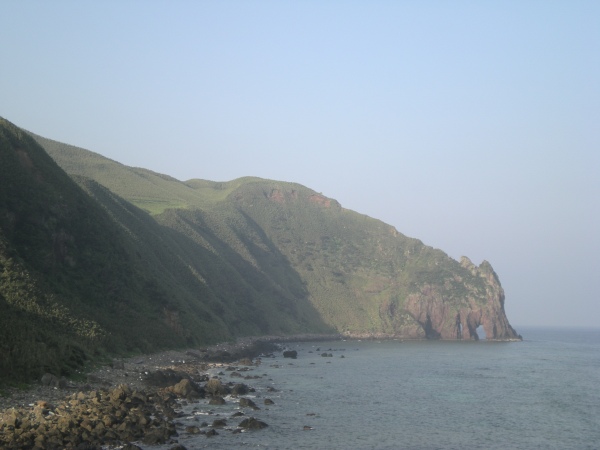

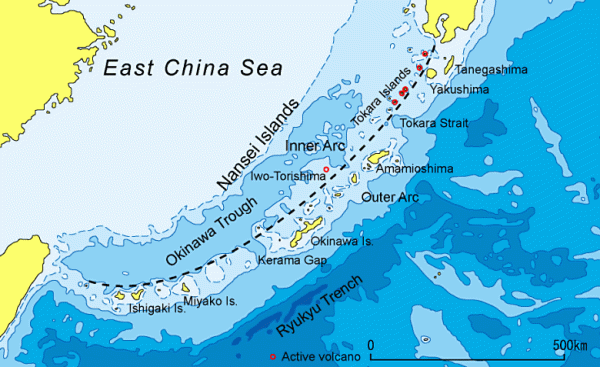

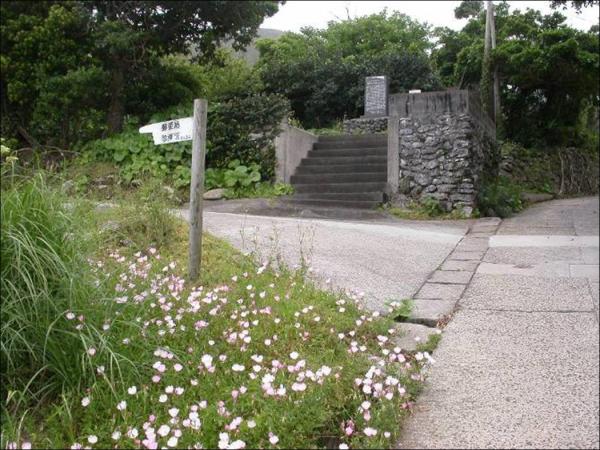
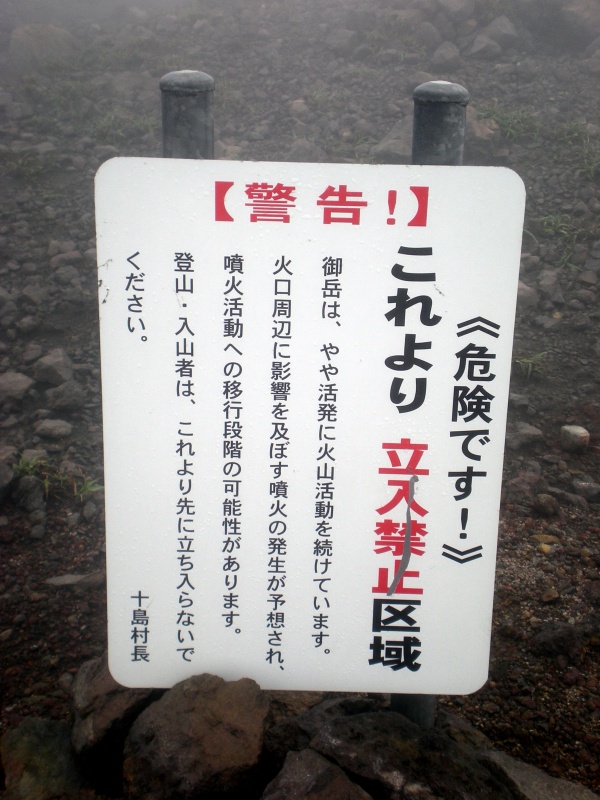
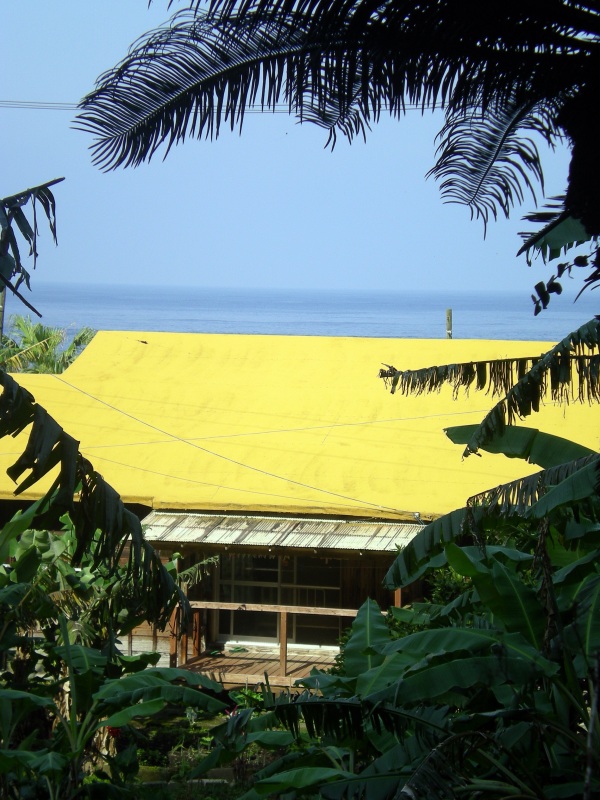
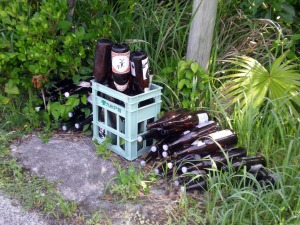
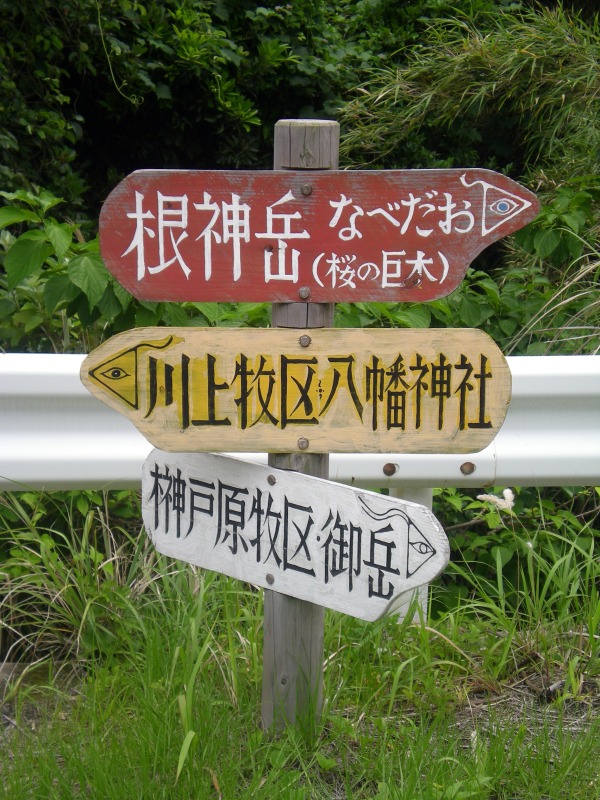
My dad talked about the volcanic activity on some of the island he was on during WWII. I don’t believe you can understand what it is like to live with that unless you are there. I know he wasn’t thrilled with the shaking and he was from LA! I do know that he always spoke about the beauty of the islands!
The History Man
http://wwwhistoryman.blogspot.com/
Hi Charlie Bell,
Thanks for dropping by. Yes the islands are certainly special and even the Japanese that live in Kagoshima (the closest city) don’t really have a good idea about island life, let alone the volcanic activity. That’s incredible that your father was there – I can’t begin to imagine what kind of experience that was…
(A nice eccelectic blog by the way, and a refreshing post about seeing the opposite point of view, thanks!)
Tom, this is a fantastic post. A thoroughly enthralling tour through some areas of Japan that I scarcely knew existed. If this is any indication of the kind of quality that you’ll be turning out, then we’re in for quite a treat… Keep it up!!
Hi Chris, many thanks – quite an accolade, especially from you! Well I’ll do my best and we shall see 🙂
Tom: this is as fascinating as it is amusing and as amusing as it is fascinating. Keep those chapters coming: I’m sure the book will be a winner….
Many thanks! Yes I’ll get onto those chapters asap… Apologies!
Never knew a subduction zone ran through the Ryukyu Isles. Very informative article….I’ll print this out should I ever go there.
Great Blog!……There’s always something here to make me laugh…Keep doing what ya do 🙂